Legal Framework and Practical Challenges
Executive Summary
- Legal Framework: Indonesia’s e-commerce platform liability is governed by Government Regulation No. 80/2019, MOCI 5/2020, and related circular letters
- Platform Obligations: Platforms must implement content governance systems, maintain reporting mechanisms, and respond to takedown requests within specified timeframes (14 days for IP infringement)
- Safe Harbor Protection: Available to platforms that fulfill statutory obligations, conduct takedowns of prohibited content, and provide subscriber information for enforcement purposes
- Enforcement Challenges: Persistent infringement issues often require enhanced strategies beyond standard takedown procedures
- Enhanced Enforcement Strategies: Include data-driven platform engagement through statistical reporting, criminal complaint filing for repeat offenders, and leveraging international pressure mechanisms
Introduction
Indonesia’s rapidly growing e-commerce sector has necessitated comprehensive regulations to address platform liability and establish safe harbor protections. This article examines the current legal framework, safe harbor provisions, and practical recommendations for addressing enforcement challenges.
Legal Framework Overview
Primary Regulations
The Indonesian regulatory framework for e-commerce platform liability is primarily governed by three key instruments:
1. Government Regulation No. 80 of 2019 on Trade on Electronic System
2. Minister of Communication and Informatics Regulation No. 5 of 2020 on Electronic System Provider in Private Sectors (“MOCI 5/2020”)
3. Circular Letter of Minister of Communications and Informatics Regulation No. 5 of 2016 on Limitations and Responsibilities of Platform Providers
Platform Obligations Under Indonesian Law
Under the current regulatory framework, Private Electronic System Providers (ESPs), including e-commerce platforms, must fulfill several critical obligations:
Content Management Requirements: According to Article 9 of MOCI 5/2020, platforms must ensure that their electronic systems do not contain prohibited electronic information and documents, and do not facilitate the distribution of such content. The regulation specifically states that platforms must ensure their systems do not contain content that:
- Violates laws and regulations
- Disturbs society and public order
- Informs methods or provides access to prohibited electronic information
Governance and Reporting Mechanisms: Article 10 mandates that User Generated Content providers must establish governance frameworks that include:
- Clear obligations and rights for subscribers and platform
- Defined responsibilities for uploaded content
- Accessible public reporting mechanisms for complaints about prohibited content
Response Procedures: When platforms receive complaints or reports about prohibited content, they must:
- Provide responses to complainants and reporting parties
- Conduct independent examinations of complaints
- Notify subscribers about complaints regarding their uploaded content
- Either takedown prohibited content or reject unfounded complaints
Safe Harbor Provisions
Conditions for Safe Harbor Protection
Article 11 of MOCI 5/2020 establishes the conditions under which platforms can be waived of legal responsibilities for prohibited electronic information transmitted through their systems. The safe harbor protection applies when platforms have:
1. Complied with statutory obligations under Articles 9 and 10
2. Provided subscriber information for law supervision and enforcement purposes
3. Conducted takedown of prohibited electronic information and documents
Intellectual Property Specific Requirements
For intellectual property infringement cases, the Circular Letter provides specific guidance on takedown timeframes:
- Standard IP infringement cases: 14 calendar days after complaint receipt, with supporting evidence including IP registration certificates
- Urgent prohibited content: 1 calendar day for content threatening health, state security, human trafficking, or terrorism
- General prohibited content: 7 calendar days for other violations
In practice, the platforms may not stick to the 14 calendar day time frame and rights holders will need to follow-up with the platforms to see that the postings are finally taken down.
Practical Challenges and Enforcement Issues
Persistent Infringement Problems
Despite the established legal framework, intellectual property holders continue to face challenges with platform compliance. Many rights holders report that infringement issues persist despite ongoing takedown campaigns conducted by their service providers.
Need for Tailored Approaches
The standardized takedown approach may not always be effective for persistent infringement cases, necessitating more sophisticated enforcement strategies to address systematic compliance failures.
Recommendations for Enhanced Enforcement
1. Data-Driven Platform Engagement
When traditional takedown campaigns prove insufficient, a more sophisticated approach involving comprehensive data presentation can be more effective:
Statistical Reporting Strategy: Instead of focusing on individual cases, present platforms with comprehensive statistics including:
- Average time for takedown implementation
- Infringement links acted against per quarter
- Infringement links successfully taken down
- Infringement links remaining unaddressed at quarter-end
This approach “is likely to generate a more meaningful response from the e-commerce platforms” as it demonstrates systematic compliance issues rather than isolated incidents.
International Pressure Leverage: The strategy can be enhanced by indicating potential referral to international authorities such as the USPTO IP attaché, who may provide feedback to units responsible for updating USTR during annual reviews. E-commerce platforms generally seek to avoid negative mentions in international trade reports.
2. Criminal Complaint Filing
For notorious repeat infringers, the recommended approach involves:
Investigation and Documentation:
- Attempt to trace infringers to physical locations
- Collect additional evidence even if investigations don’t yield immediate results
- Identify supply chain connections between merchants
IP Office Engagement: File criminal complaints with the IP office, which can then:
- Compel platforms to provide subscriber particulars including names and addresses
- Conduct raids on recalcitrant targets
- Provide stronger enforcement mechanisms than civil procedures
The expected outcome of any criminal complaint typically involves a raid, followed by subjecting the infringer to the criminal justice process. This can enhance general deterrence through publicity or a potential criminal conviction, unless the matter is settled beforehand
Conclusion
The key to effective enforcement lies in:
- Utilisation of the takedown framework and data collation for review and feedback to the platforms.
- Being ready to leverage data to demonstrate to the platform of any systematic compliance failures
- Applying suitable international pressure through established channels
- Escalation to a criminal complaint as a means to enhance general deterrence as well as complement the utilization of the platform’s takedown framework .
A data driven approach will lead to more effective lobbying for the platform to improve their implementation of the takedown framework.
This data also serves as a powerful tool for advocating for international support and scrutiny of the platform’s effectiveness in combating infringements.
However, rights holders should still view a criminal complaint as a necessary complement to utilising a platform’s takedown framework.







